Urban Farming Thrives In Bengaluru Against All Odds | Bengaluru News
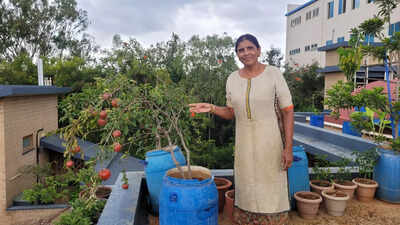
MV Ramani has turned her little yard into an orchard, vibrant and bountiful, despite constraints of space, time, and water. Nature has been kind to her, rewarding her with star fruits that match the size of her palm. The garden is dotted with fig, guava and pomegranate trees, and serves as a sanctuary for bees and butterflies.Ramani maintains a terrace garden too, where she cultivates vegetables including tomato, brinjal, chillies, gourds and greens. Even her fruit plants like guava and Indian jujubes are grown on funky, fluorescent blue pots.“We had a farm, and between farm and home, we used to grow everything that we eat. Wherever there is space, I fill it with greenery,” says Ramani, a legal professional who works as a partner at LexOrbis.Her husband T Suvarna Raju, former chairman & MD of Hindustan Aeronautics Ltd (HAL), is a plant lover too and he helps Ramani with smart gardening solutions using his engineering skills.Urban farming is a different ball game altogether. Growing plants in city spaces demands a lot of patience, dedication and care. Sourcing affordable soil, seeds or cow dung for fertilisation itself can sometimes prove difficult. Property owners frequently object to tenants placing heavy pots on rooftops. Issues with water seepage and stains may arise, if care is not taken. And pests do not spare even plants grown on the 20th floor of residential buildings. However, amid all these challenges, many Bengalureans are taking up farming. They cultivate fruits and vegetables in their gardens, balconies and rooftop spaces.“Urban farming is becoming more than a trend. It’s a movement,” says Ramita Maharjan, resident of Brigade Millennium in JP Nagar. “More and more people are growing their own food on rooftops in search of better health, peace of mind and a deeper connection with nature,” she adds.Hand-pollinationAnand Havaldar’s garden is a testament to his resourcefulness. The 51-year-old who works as a senior engineer at Nexteer Automotive India cultivates a variety of plants, including Brahma Kamal, in his terrace garden. The night-blooming flower would fill Anand’s garden with its sweet fragrance, but would not produce fruits. “The plant remained barren as pollination never happened,” says Anand, who holds a diploma in agriculture from the Gandhi Krishi Vigyana Kendra (GKVK).
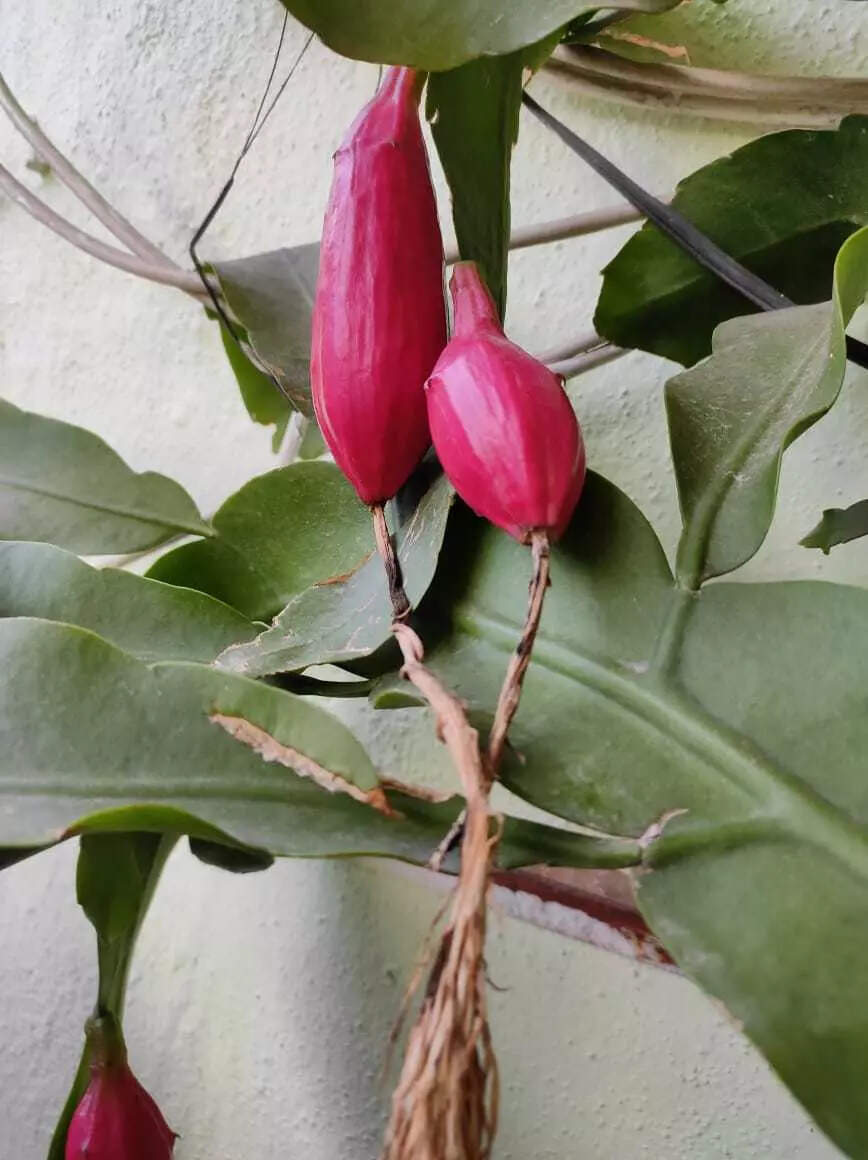
FRUITS OF LABOUR: Anand Havaldar’s fruit-bearing Brahma Kamal plant
Anand overcame the challenge by hand pollinating – taking pollen from one Brahma Kamal plant to the other. Soon, it bore fruits, bringing him much joy, and earning him stardom among local gardeners.Water, air, coco peat, instead of soilWater and coco peat are extensively used instead of traditional soil as a growing medium. Coco peat’s moisture retention capabilities reduce watering frequency, points out Bhuvana Sharma, a scientist who works with GKVK’s National Centre for Biological Sciences (NCBS). “Coco peat is lightweight too, making it easy to handle,” she says.Usha Gopinath, a former IT professional, uses coco peat to grow microgreens. “I grow ragi, wheat, chia seed, mustard, red radish, and fenugreek microgreens,” says the 44-year-old who lives in Pearl City in Sarjapur Road, adding, “It’s hard to get children to eat vegetables. I just sneak those tiny plants into their toasts, salads and soups and they devour it.”Some microgreens, Bhuvana says, are 40% more nutritious than their mature counterparts.Microgreens can be cultivated on moist tissue papers as well. These baby plants can typically be harvested a week or two after germination. “All you have to do is water them 4-5 times a day. Avoid overwatering. Microgreens don’t require manure,” says Usha.Dav Fod, a former assistant professor of sociology, grows over 12 varieties of microgreens including wheat grass. Aeroponics, a method wherein plant roots are suspended in the air and provided nutrient solutions, rather than relying on soil, is also gaining popularity. “There are farms in and around Bengaluru trying different techniques like this. Aeroponics allows for the cultivation of a wide variety of plants, including leafy greens, vegetables, herbs, and even some fruits. This technique is particularly well-suited for crops like lettuce, spinach, basil, tomatoes, and strawberries,” says Dav.A forest in a yardNeelima Gudipati lives in an independent house in Margodanahalli where she maintains a garden with plants growing in containers and soil beds. Her wild and untamed garden has mango, ginger, mulberry, guava, pear, lemon, banana, tomato, manathakkali, star fruit, dragon fruit, Chinese potato and brinjal. She also grows leafy vegetables such as coriander, amaranthus and Malabar spinach. Her children, Suhas and Sahaj, particularly enjoy the passion fruit juice, chikoo almond milk shake, star fruit salad and flat beans palya that she makes using homegrown produce.
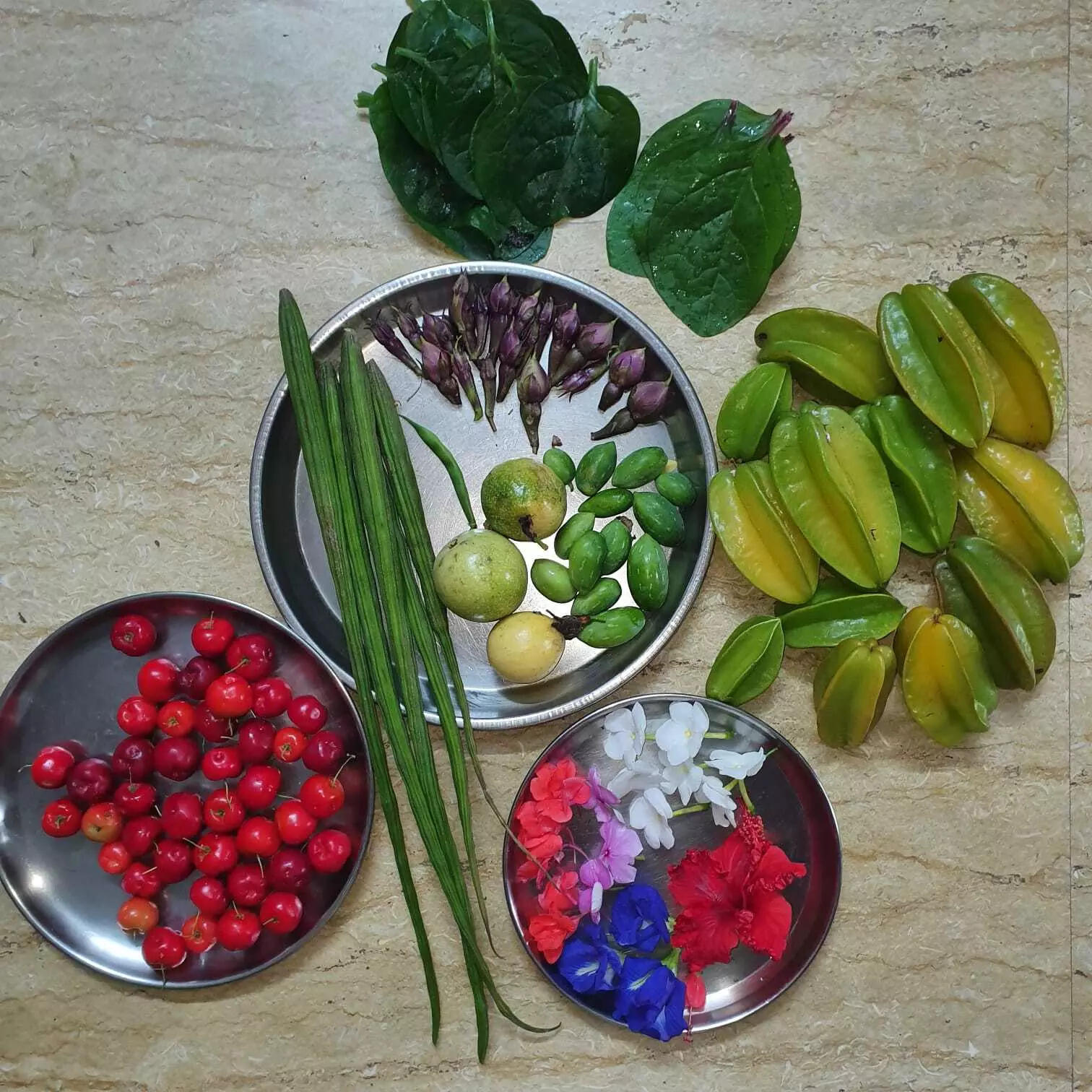
NATURE’S BOUNTY-Harvest from Neelima Gudipati’s garden
Neelima creates an environment that mirrors natural forest conditions, allowing fallen leaves and branches to form a protective layer on the ground. This helps the soil retain moisture. Termites in the garden help decompose the twigs. “Nature sustains forests without human intervention,” she tells us as we stroll through her garden. Neelima leaves her pomegranates unharvested for local wildlife. “Squirrels and birds visit regularly to feast on these fruits,” she says.VOICE BOXWherever there is space, I fill it with greenery. Like me, all the urban gardeners face the constraints of space, as well as water, especially in summers. Despite these, we are trying to grow whatever and wherever we can. Hydroponics and aquaponics are making their way into balconies. We have an aquaponics set up where the technology allows the water from the fishpond to be circulated to grow plants and recycled to the pond.MV Ramani, LEGAL PROFESSIONAL AND RESIDENT AT CASCADING MEADOWS, TC PALYADuring the construction of the Tungabhadra dam, my grandfather relocated from his village, bringing his cherished plants with him.
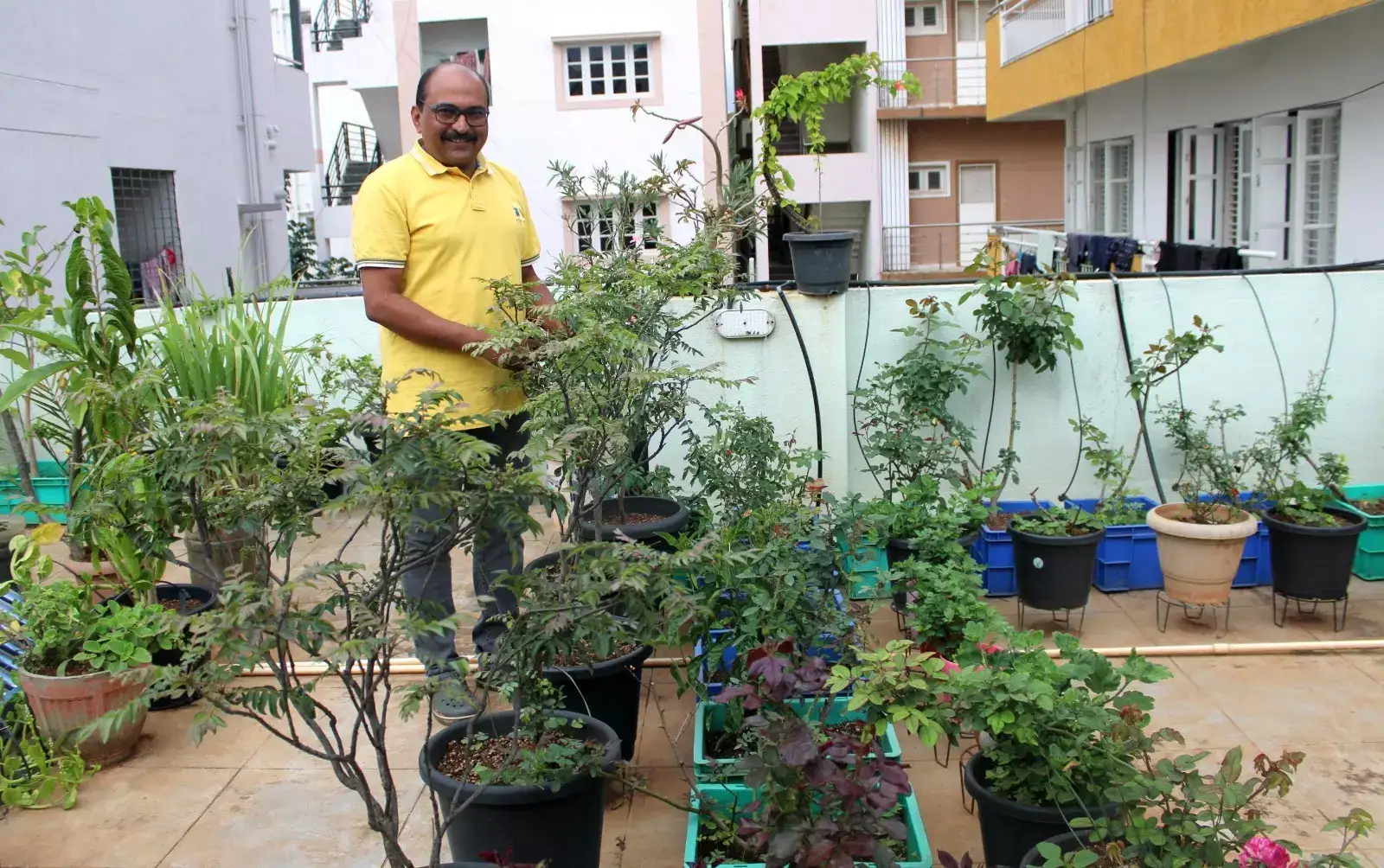
Anand Havaldar
The curry leaf plants I now have are descendants of those original plants, being at least 100 years old. For nourishing my plants, I rely on vermicompost and kitchen compost as fertilisers. My dragon fruit plant produces up to 70 fruits annually. I source my gardening supplies from Bio Centre, a government organisation. When I’m away, I water my plants using a drip irrigation system equipped with a pump and timer.Anand Havaldar, 51, SENIOR ENGINEER AT NEXTEER AUTOMOTIVE INDIAOver the years, I’ve learnt a lot about plant cultivation. I grow nitrogen-fixing plants around my papaya trees. When you prune nitrogen-fixing plants, they release nitrogen into the soil as they no longer require it after being cut. This released nitrogen gets absorbed into the soil, becoming available for the papaya plant to utilise. This helps the papaya plant become healthier. This process serves as a natural alternative to the conventional NPK fertilisers typically used in cultivation. I nurture my plants with a lot of love. I communicate with them, show them tenderness and kiss them. When I collect their produce, I thank them.
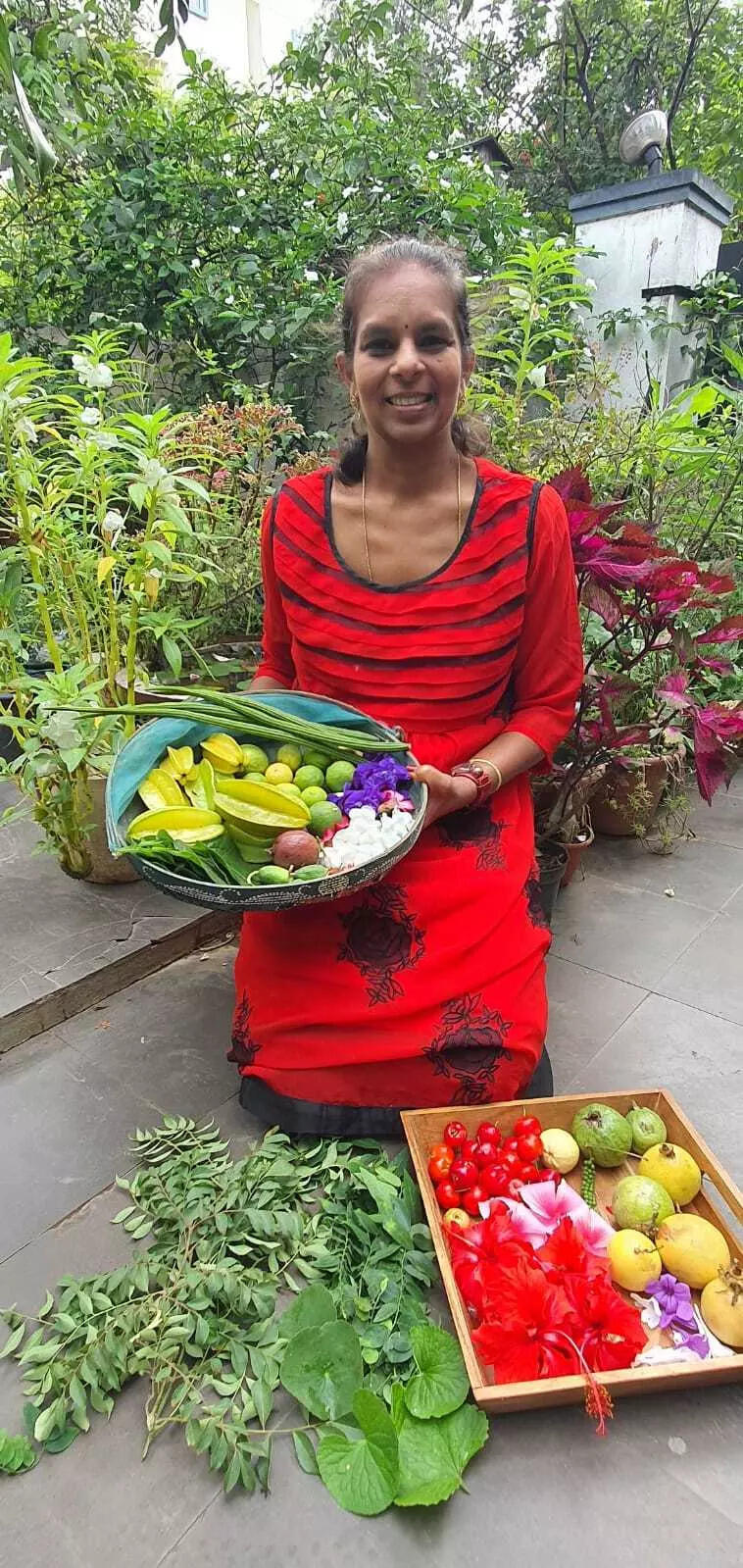
Neelima Gudipati
I think plants experience joy when raindrops first touch them, and observing this is a delight. I love waking up to the sight of morning dew adorning their foliage. I follow sustainable gardening practices. I use organic manure including dry leaves, cow dung, coco peat and jeevamruta. Neelima Gudipati, RESIDENT, CASCADING MEADOWS, MARGODANAHALLIMicrogreens can be easily grown without the use of pesticides and chemical fertilisers.I cultivate a dozen different varieties, and coco peat serves as my preferred growing medium.
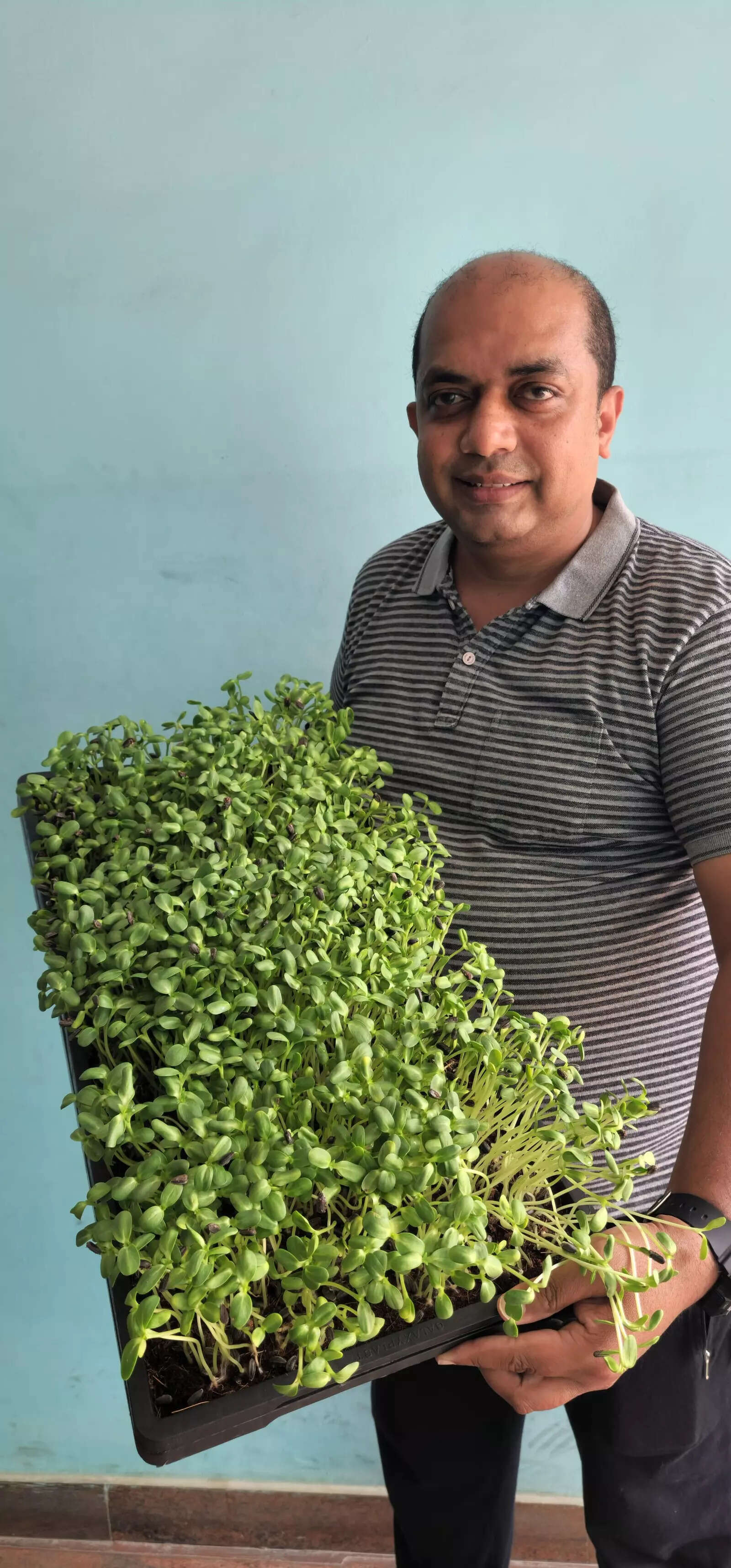
Dav Fod
Dav Fod, URBAN FARMERAs we farm, we see how birds, butterflies, and animals become part of the ecosystem. They too are nourished, and we begin to understand that farming is not possible without them. We realise we need them far more than they need us. Nature thrives without humans, but we cannot survive without her.
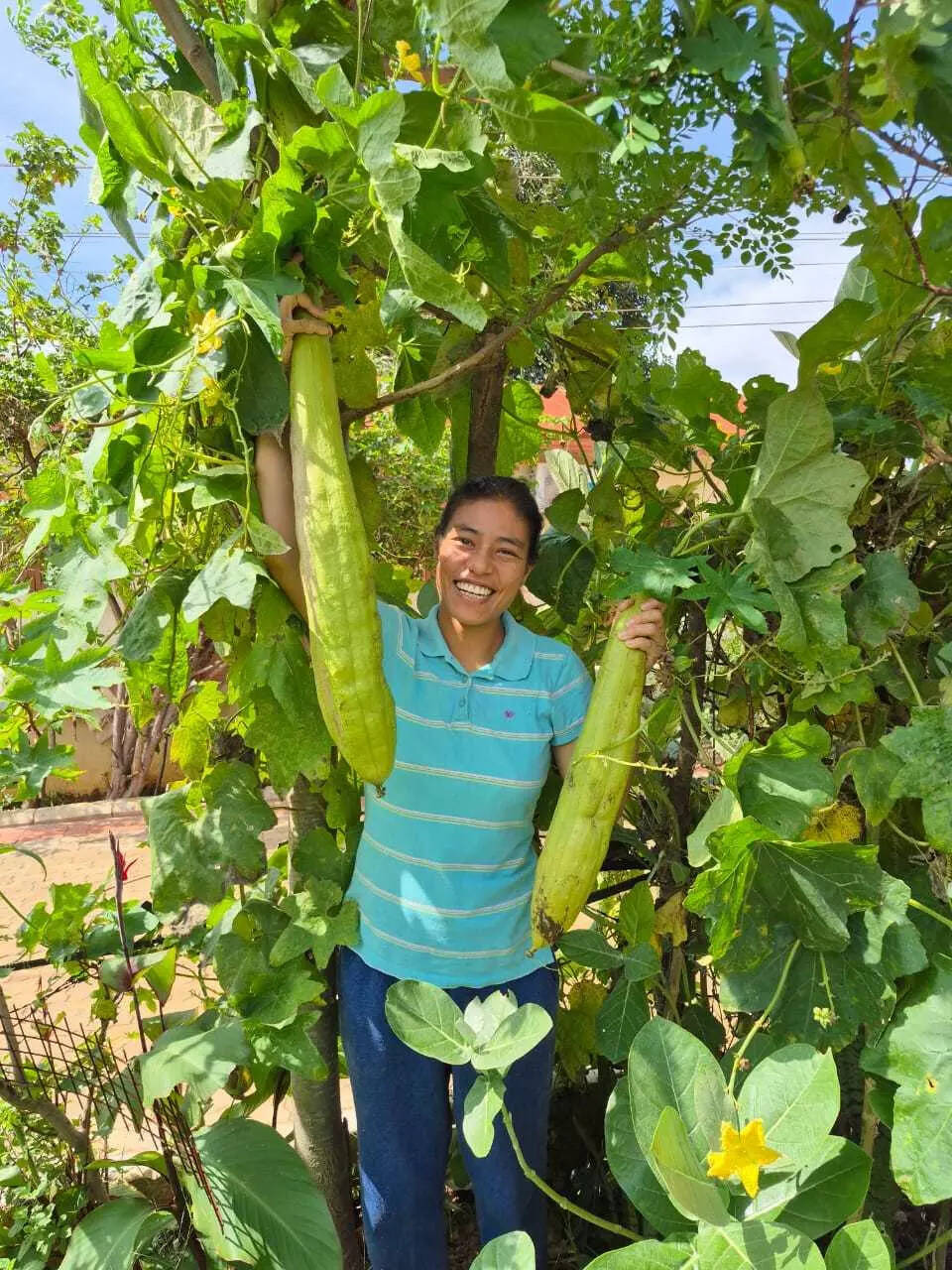
Vaidya Ramita Maharjan
Through this journey, we learn gratitude, compassion, sharing, and interdependence – values that we then pass on to the next generation.Vaidya Ramita Maharjan, AVID FARMER, RESIDENT OF BRIGADE MILLENNIUM AND MEDICAL DIRECTOR, RISHIPATH WELLNESS AND RESEARCH INSTITUTE, RISHIPATH ASHRAM, THAMMAPURAMI started growing plants very recently. I grow microgreens. My ground cultivation includes spinach, pudina, brinjal, chilli, curry leaves and bitter gourd. For nourishment, I provide my plants with crushed eggshells, banana peel juice, powdered vegetable peels and rice water.

Usha Gopinath
I also utilise garlic extract as a natural defence against plant ailments. Tending to these plants brings me immense satisfaction!Usha Gopinath, 44, FORMER IT PROFESSIONAL, LIVES IN PEARL CITY, SARJAPUR ROADMy garden has evolved from flowering plants to include fruits and vegetables. The fruit varieties I cultivate include sapota, guava, pomegranate, apple, fig, dragon fruit, papaya, mulberry and grapes. Vegetables include tomato, chillies, lady’s finger, greens, brinjal, drum stick, bitter gourd, Chinese potato, and chow chow. I maintain flowering plants amongst the vegetables as they are essential for facilitating pollination. I use lightweight containers such as plastic pots and grow bags for easier handling.
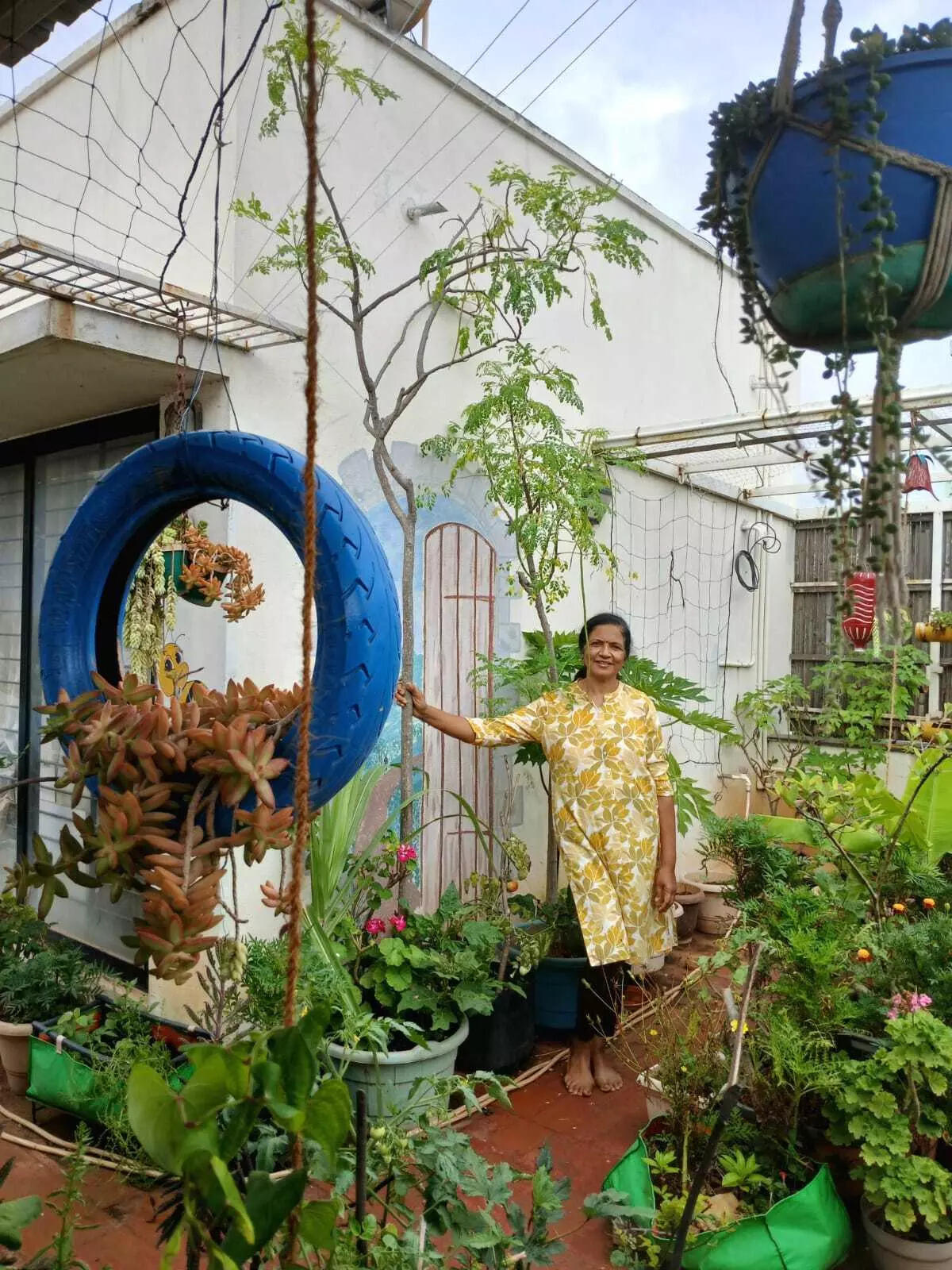
Preetha Suresh
The potting mix can be made less heavy by incorporating cocopeat, leaf mould, rice husk and reduced soil quantity. For nourishment, I use kitchen compost and various nutrient solutions prepared from onion peel, potato peel, banana peel and similar ingredients. Due to water scarcity, I rely on aero outlet water and STP water. I make pots out of old cans and bottles.Preetha Suresh, 57, FORMER BANKER, AND RESIDENT, TC PALYA





